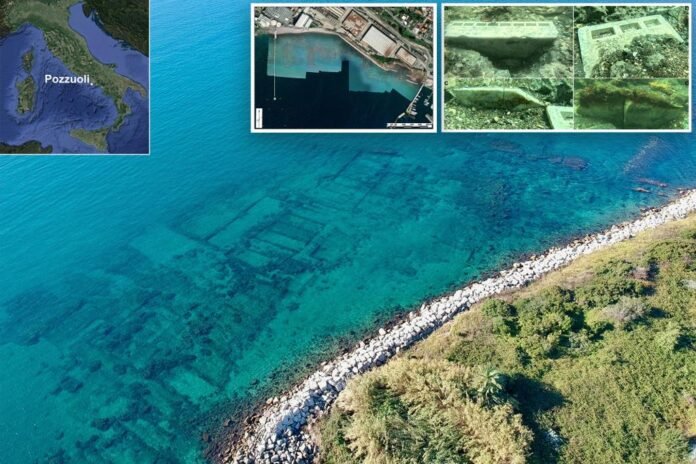Archaeologists have found out the left-overs of a 2,000-year-old temple submerged off the Italian coast similar Naples, most likely constructed by way of immigrants from Nabataea, an historical Arabian kingdom.
Nabataea is understood for Petra’s iconic rock-carved constructions, together with the Treasury, famously featured in “Indiana Jones and the Last Crusade.”
The Nabataean kingdom as soon as managed a industry community stretching from northern Arabia to the Mediterranean, dealing in incense, gold, ivory, and perfumes.
Their wealth peaked within the first century AD, exemplified by way of Petra’s Treasury.
The temple, idea to had been worn by way of Nabataean buyers, used to be then buried beneath concrete and pottery, most likely because of the buyers resignation the department, in line with a learn about printed in Antiquity on September 12.
Pupil Michele Stefanile with the Scuola Superiore Meridionale in Italy first started the underwater learn about in 2021 to look the department.
“When I was a student, I was impressed by the presence of some Nabatean material found somewhere in the sea in Puteoli since the XVIII century, and I was also astonished that nobody really organized a hunt for this impressive historical testimony.,” mentioned Michele Stefanile, a maritime archaeologist on the Southern Graduate Faculty in Naples to Fox Information Virtual.
The temple lies similar Pozzuoli, round 10 miles east of Naples.
All through Roman instances, Pozzuoli used to be referred to as Puteoli and served as a buying and selling port.
In 2023, researchers mapping the seafloor found out two submerged rooms with Roman-style partitions. The rooms, about 32 by way of 16 toes, contained two white marble altars, every with oblong recesses that most likely held sacred stones.
“It seems that we have a building dedicated to the Nabataean gods, but with Roman architecture and Latin inscription,” Stefanile mentioned to Reside Science.
Marble slabs within the rooms have been inscribed in Latin with the word “Dusari sacrum,” which means “consecrated to Dushara,” the deity of the Nabataean public.
Volcanic process over centuries has submerged about 1.2 miles of Roman-era structures similar Pozzuoli, together with warehouses and alternative constructions from the traditional port.
Artifacts recovered because the 18th century steered a temple may well be buried there, however its precise location used to be unknown till now.
“Possibly after Trajan’s conquest of Arabia in 106 AD, the Nabataeans had no more possibility of free trading in Puteoli, and they possibly abandoned the harbor,” Stefanile mentioned to Reside Science.
Then Nabataea used to be annexed into the Roman Empire in AD 106, the inland industry routes managed by way of the Nabataeans collapsed.
The temple at Puteoli will have been buried in keeping with those adjustments.
“The entire region is characterized by an intense volcanic activity, that caused the submersion of the whole ancient coastal strip at a depth of 0-6 meters,” in line with the Scuola Superirore Meridionale.


